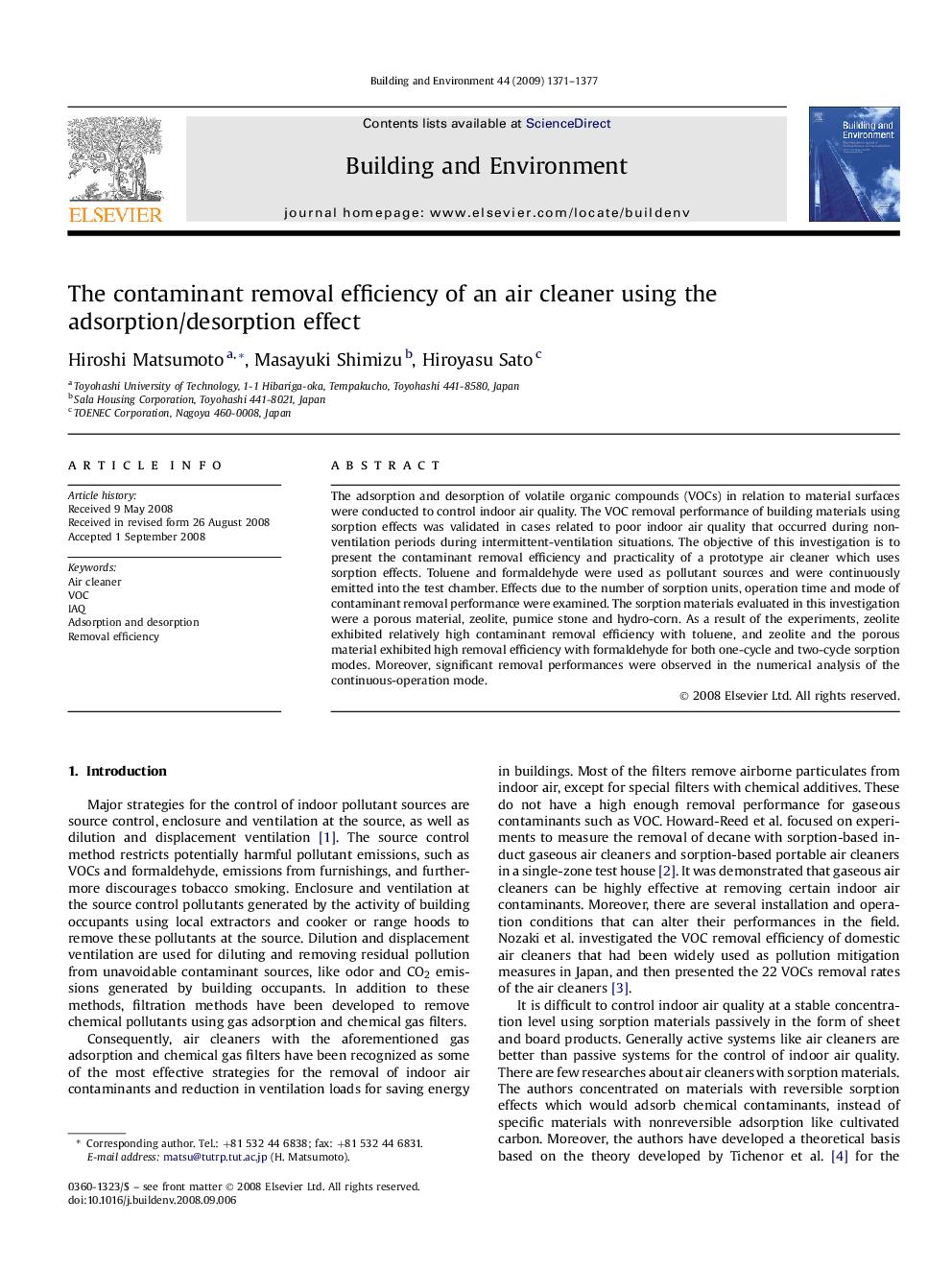| Article ID | Journal | Published Year | Pages | File Type |
|---|---|---|---|---|
| 249508 | Building and Environment | 2009 | 7 Pages |
The adsorption and desorption of volatile organic compounds (VOCs) in relation to material surfaces were conducted to control indoor air quality. The VOC removal performance of building materials using sorption effects was validated in cases related to poor indoor air quality that occurred during non-ventilation periods during intermittent-ventilation situations. The objective of this investigation is to present the contaminant removal efficiency and practicality of a prototype air cleaner which uses sorption effects. Toluene and formaldehyde were used as pollutant sources and were continuously emitted into the test chamber. Effects due to the number of sorption units, operation time and mode of contaminant removal performance were examined. The sorption materials evaluated in this investigation were a porous material, zeolite, pumice stone and hydro-corn. As a result of the experiments, zeolite exhibited relatively high contaminant removal efficiency with toluene, and zeolite and the porous material exhibited high removal efficiency with formaldehyde for both one-cycle and two-cycle sorption modes. Moreover, significant removal performances were observed in the numerical analysis of the continuous-operation mode.
